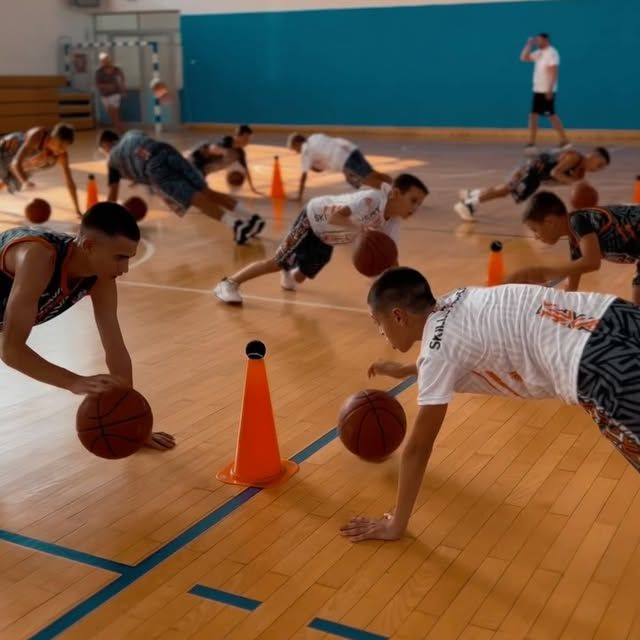Basketball is more than just putting the ball through the hoop—it’s a fast-paced, team-oriented sport that demands a combination of physical prowess, mental sharpness, and technical proficiency. Whether you’re a complete beginner or someone looking to brush up on the essentials, understanding the basic skills in basketball is the first step toward becoming a competent and confident player. In this comprehensive guide, we break down the foundational skills that every player should master to elevate their game on the court.
Understanding the Importance of Basic Basketball Skills
Before diving into drills or trying flashy moves, it’s essential to grasp why basic skills are the bedrock of basketball. From high school courts to professional arenas, players who excel in the fundamentals tend to be the most reliable and coachable. These core skills—such as dribbling, shooting, passing, rebounding, and defense—form the language of the game, allowing athletes to read plays, respond effectively, and contribute meaningfully to their teams.
Mastering the basics also helps reduce the risk of injury, build self-confidence, and develop good habits that last throughout your playing career. Without these foundational tools, even the most athletic individuals can struggle to make an impact during games.
Dribbling: The Foundation of Ball Handling
What is Dribbling in Basketball?
Dribbling is the act of bouncing the basketball continuously with one hand while walking or running. It’s the primary method players use to move the ball across the court legally. Without effective dribbling, a player becomes stationary and limited in their offensive options.
Key Dribbling Techniques
Basic dribbling techniques every player should learn include the stationary dribble, crossover dribble, behind-the-back dribble, and spin move. Each serves a different purpose, whether it’s maintaining control under pressure or creating space from a defender. Mastering these moves allows players to navigate tight defenses and create scoring opportunities.
Drills to Improve Your Dribbling Skill
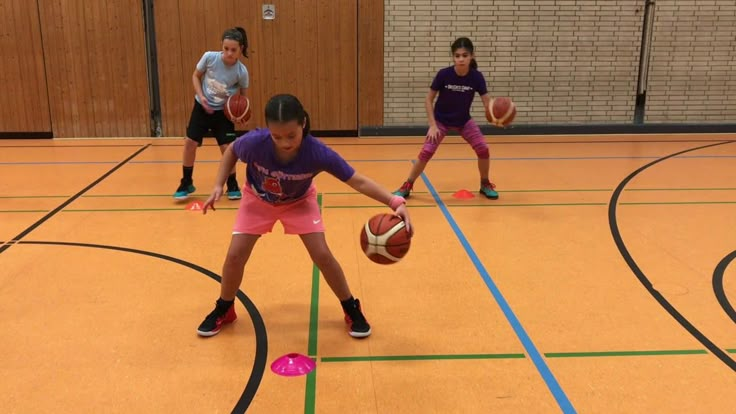
Practice is key to developing superior ball-handling. Beginners should start with simple stationary drills, such as dribbling in place using both hands, then progress to movement-based drills like zig-zag dribbling or cone drills. Consistency is crucial—daily practice with a focus on control, speed, and hand-eye coordination will yield noticeable improvements over time.
Shooting: Scoring With Precision
Types of Basketball Shots
Shooting is arguably the most exciting part of basketball. It’s how points are scored and games are won. There are several types of shots every player should become familiar with, including the layup, jump shot, free throw, and three-point shot. Each shot requires different techniques and is used in different game situations. The layup is ideal for close-range scoring, while the jump shot is effective from mid to long distances. Free throws are taken from the foul line after certain infractions, and the three-pointer offers high reward from beyond the arc.
Correct Shooting Form and Mechanics
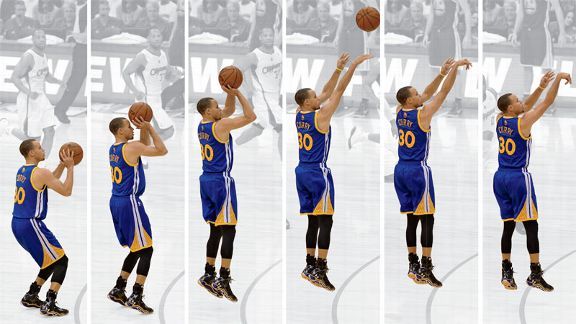
Good shooting starts with solid mechanics. Key elements include proper hand placement, balanced foot positioning, a stable shooting base, and a smooth follow-through. The B.E.E.F. technique (Balance, Eyes, Elbow, Follow-through) is a proven method to develop consistency. Keeping your eyes on the target, aligning your elbow under the ball, and releasing with a gentle flick of the wrist are foundational habits that contribute to better shooting percentages.
Shooting Drills for Consistency and Accuracy
Repetition is the key to becoming a reliable shooter. Beginners can start with form shooting near the basket before progressing to mid-range and three-point shots. Common drills include the “Mikan Drill” for layups, “Spot Shooting” from various floor positions, and “Free Throw Challenges” to simulate pressure situations. Keeping track of makes and misses during each session helps measure progress and improve over time.
Passing: Moving the Ball Like a Pro
Common Types of Passes
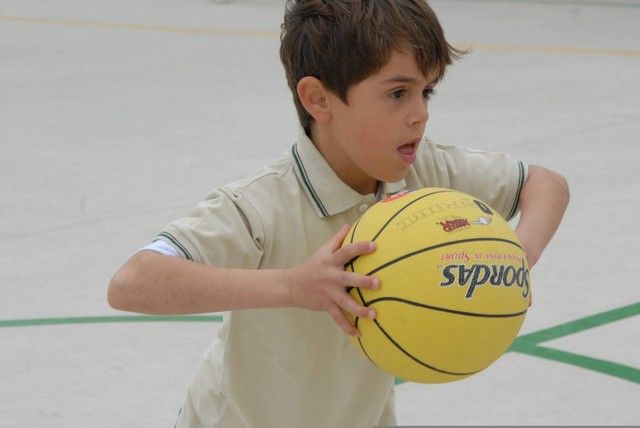
Passing is what makes basketball a true team sport. Effective passing allows for fluid ball movement, creating open shots and breaking down defensive setups. The most commonly used passes include the chest pass, bounce pass, overhead pass, and the flashy no-look pass. Each has specific scenarios where it’s most effective—for example, a bounce pass is ideal for getting the ball around a defender’s hands, while a chest pass is fast and direct over short distances.
How Passing Improves Team Play
Teams that pass well are typically more difficult to defend. Quick, accurate passes force the defense to rotate, which creates openings. It also promotes unselfishness and team chemistry. Players who master the art of passing are often seen as playmakers who elevate the performance of those around them. Effective passing leads to better ball control, more scoring opportunities, and overall strategic superiority.
Drills for Sharp and Accurate Passes
To enhance passing skills, players should practice partner drills, wall passing drills, and dynamic passing exercises during movement. Drills like “Passing on the Move,” “Partner Passing with Footwork,” and “No-Look Challenge” help build both accuracy and confidence. Focus on leading your teammate and delivering the ball with the right timing and velocity.
Rebounding: Owning the Glass
Difference Between Offensive and Defensive Rebounding
Rebounding is the act of retrieving the ball after a missed shot. It comes in two forms: offensive rebounding, where your team regains possession after a miss, and defensive rebounding, where you prevent the opposing team from getting second-chance points. If you want a deeper breakdown of the concept, check out our full guide on what is a rebound in basketball.
Positioning and Timing Techniques
Great rebounders rely more on positioning and timing than height alone. Key techniques include boxing out your opponent, maintaining a wide stance, keeping your hands up, and anticipating the ball’s trajectory off the rim. By establishing a strong base and reacting quickly, players can consistently beat taller or more athletic opponents to the ball.
Rebounding Drills for Better Vertical and Hustle
To develop rebounding skills, try drills like “Tip Drill,” “Rebound and Outlet,” and “2-on-2 Box Out.” Plyometric exercises such as squat jumps and tuck jumps can improve vertical leap. Consistent rebounding practice not only builds toughness and endurance but also teaches players to stay aggressive and alert at all times under the basket.
Defense: Shutting Down the Opposition
Man-to-Man vs. Zone Defense Basics
Defense is a critical, often underrated aspect of basketball. It’s not just about blocking shots—it’s about preventing your opponent from executing their game plan. Two primary types of defense are used in basketball: man-to-man and zone. In man-to-man defense, each player is responsible for guarding a specific opponent. In zone defense, players cover designated areas of the court rather than specific opponents. Understanding the strengths and weaknesses of each system is essential for both individual and team success.
Defensive Footwork, Stance, and Anticipation
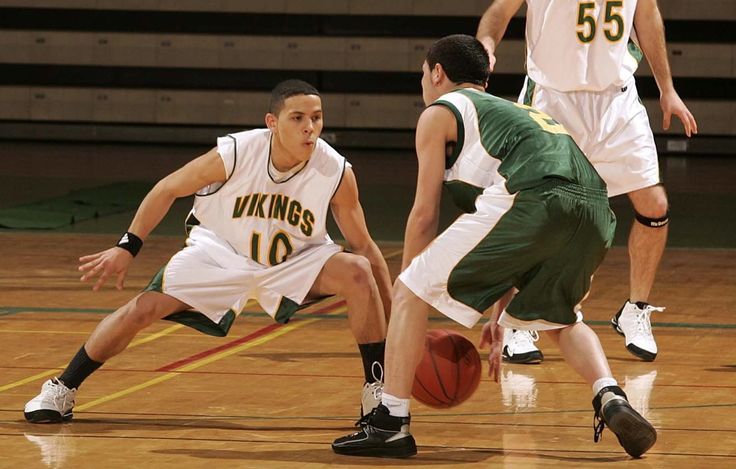
Great defense starts with proper stance—knees bent, feet shoulder-width apart, and hands active. Defensive footwork involves quick lateral slides, backpedaling, and the ability to recover fast. Anticipation plays a big role, as reading your opponent’s eyes, body movement, and dribbling patterns can help you make timely steals or force bad shots. Maintaining a low, balanced posture allows you to react quickly and stay in front of the ball handler.
Defensive Drills to Improve Agility and Awareness
Some of the best defensive drills include “Zig-Zag Slides,” “Close-Out Drills,” and “Mirror Defense.” These help improve foot speed, lateral agility, and defensive instincts. Adding reaction-based drills, like partner mirror games or cone response exercises, trains your body and mind to act swiftly under pressure. Defensive awareness can turn an average player into a game-changer.
Footwork: The Hidden Key to Every Skill
Why Footwork Matters in Offense and Defense
Footwork is a foundational skill that connects all aspects of basketball. Whether you’re shooting, defending, rebounding, or passing, proper foot placement and movement dictate your effectiveness. In offense, good footwork helps with balance and shooting accuracy. In defense, it determines how well you can stay with your opponent without fouling. It’s also crucial for transitioning between skills smoothly during gameplay.
Pivoting, Shuffling, and Jab Steps
Three fundamental footwork moves every player should master are pivoting, shuffling, and jab steps. Pivoting allows players to maintain control while changing direction without traveling. Shuffling is used in defensive positioning to stay in front of opponents. Jab steps are offensive tools used to fake defenders and create space. Each technique adds a layer of complexity and control to a player’s game.
Footwork Improvement Drills
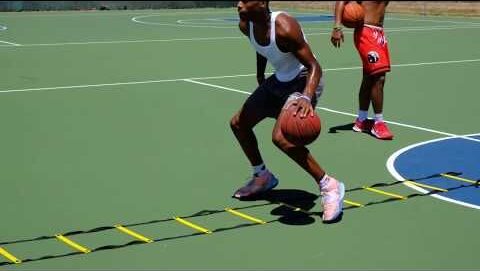
Footwork can be improved through agility ladder drills, cone weaving, and jump-stop practices. “Jump Stop and Pivot,” “Mirror Shuffle,” and “Four-Corner Cone Drill” are effective for enhancing control and quickness. Incorporating these drills into daily routines boosts balance, coordination, and responsiveness on the court.
Conditioning and Agility: The Engine Behind Performance
Importance of Stamina, Agility, and Speed
Basketball is a high-intensity sport that demands endurance, quick bursts of speed, and the ability to change direction rapidly. Conditioning plays a key role in sustaining energy throughout the game, while agility determines how well you can respond to in-game situations. Without proper conditioning, even skilled players can become liabilities as fatigue sets in.
Sample Basketball Conditioning Workouts
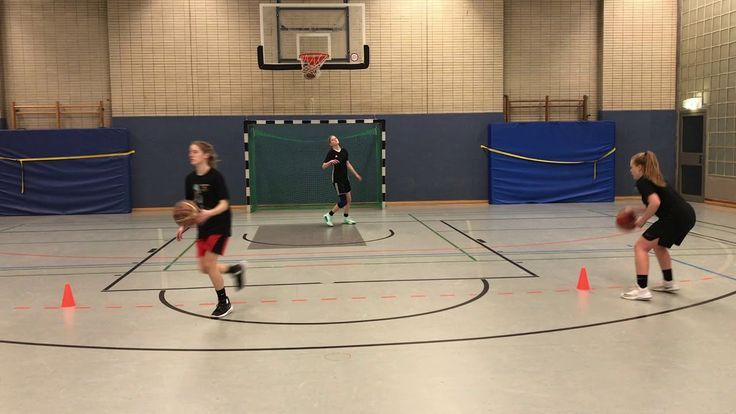
Effective basketball workouts include sprints, suicides, shuttle runs, and circuit training. A balanced regimen targets cardiovascular health, lower-body strength, and explosive power. Incorporating intervals—like sprinting for 30 seconds followed by light jogging—helps simulate game conditions. Drills like “Ladder Runs” and “Dot Drills” are great for improving foot speed and coordination.
Injury Prevention Through Proper Fitness
Maintaining flexibility and strength can significantly reduce the risk of common basketball injuries such as ankle sprains, knee strains, and hamstring pulls. Stretching before and after practice, staying hydrated, and cross-training with strength-building exercises like squats, lunges, and core workouts help keep the body resilient and game-ready.
Basketball IQ: Thinking the Game
Understanding the Rules and Strategies
Basketball IQ refers to a player’s understanding of the game’s rules, tactics, and situational awareness. High basketball IQ allows players to anticipate plays, adapt to defensive schemes, and make smarter decisions on the court. Knowing when to pass, when to shoot, how to run a play, and how to exploit mismatches are all signs of a player with strong game intelligence.
How to Improve Decision-Making on the Court
Improving your decision-making begins with mastering the fundamentals, then learning to apply them in real-time. Scrimmaging, situational drills, and role-playing offensive and defensive scenarios help players gain confidence in their judgment. Watching professional games and analyzing plays can also develop your strategic understanding and teach you how top players think during critical moments.
Watching and Analyzing Games to Learn
One of the best ways to sharpen your basketball IQ is by watching high-level games. Pay attention to how players move without the ball, react on defense, and create scoring opportunities. Pause the video and think about what you would have done in that situation. This mental exercise trains your brain to recognize patterns, anticipate outcomes, and develop smarter instincts on the floor.
Communication: A Skill Often Overlooked
Why Verbal and Non-Verbal Cues Are Crucial
Communication in basketball isn’t just shouting instructions—it’s about coordination, leadership, and teamwork. Players need to call out screens, help on defense, signal for passes, and direct traffic on the court. Non-verbal communication, like hand gestures and eye contact, also plays a huge role in fast-paced situations where talking may not be possible.
On-Court Leadership and Calling Plays
Strong communication skills often separate good players from great ones. Point guards, in particular, must act as vocal leaders who manage the flow of the game. Calling plays, directing teammates into position, and motivating others during intense moments are all aspects of on-court leadership. This not only improves team chemistry but also boosts overall performance.
Tips for Better Communication with Teammates and Coaches
To become a better communicator, always maintain eye contact, use clear language, and stay positive—even when correcting mistakes. Listening is just as important as speaking. Show respect by acknowledging feedback from teammates and coaches. Regular team meetings and post-game discussions also help reinforce effective communication habits.
Teamwork and Sportsmanship
Working Cohesively with Others
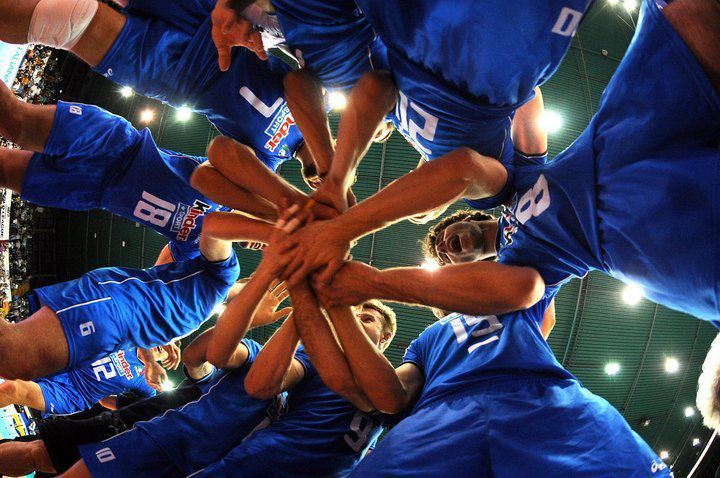
Basketball is a team sport at its core. No matter how talented a player is individually, success comes from the ability to work within a unit. Good teamwork means sharing the ball, rotating on defense, and trusting your teammates to make the right play. It also requires selflessness—putting team goals above personal stats.
Respect for Opponents, Referees, and Teammates
True sportsmanship is about playing hard while showing respect. This means accepting calls gracefully, shaking hands with opponents, and supporting teammates during tough moments. Players who show maturity and humility often gain the respect of coaches, scouts, and fellow athletes alike.
How Good Sportsmanship Enhances Performance and Reputation
Beyond skill, coaches often look for players who exhibit good character. Sportsmanship creates a positive atmosphere that boosts morale and encourages long-term growth. Teams that respect each other tend to collaborate more effectively, stay motivated, and perform better under pressure. Your attitude on and off the court can influence your playing time, leadership opportunities, and future basketball prospects.
Drills and Practice Routines for Beginners
Daily Practice Schedule for Skill Building
Consistency is key when learning basketball. A well-rounded daily routine should cover all the basic skills—dribbling, shooting, passing, and conditioning. Beginners can start with 10 minutes of ball-handling drills, 15 minutes of shooting practice, 10 minutes of passing with a partner or wall, and wrap up with 10–15 minutes of fitness or agility work. Keeping sessions between 45–60 minutes makes practice sustainable and enjoyable.
Recommended Drills by Age Group
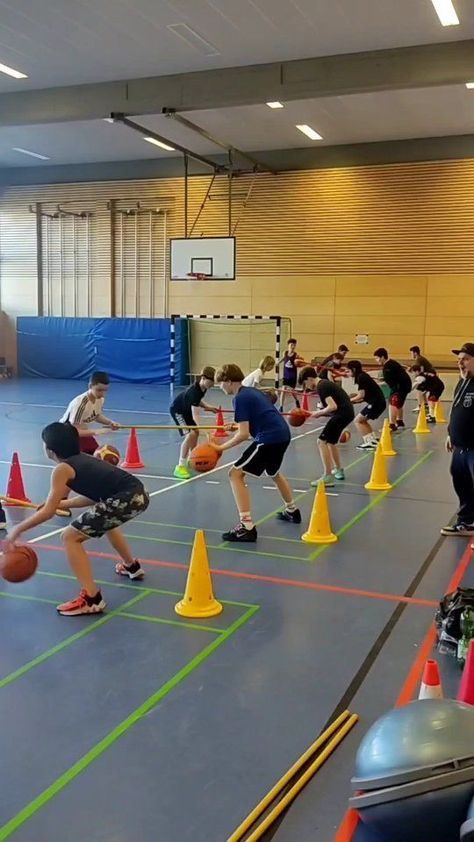
For younger players (ages 6–10), focus on fun, game-based drills like “Red Light, Green Light Dribbling” or “Knockout” to develop coordination and familiarity. Ages 11–14 can benefit from more structured exercises such as the “Mikan Drill” for layups and cone dribbling for control. High school beginners should practice advanced footwork drills, defensive slides, and full-court shooting to prepare for competitive play.
Tracking Progress Over Time
Keeping a training log can significantly boost motivation and improvement. Track how many shots are made out of 50, how many dribbles are completed in 30 seconds, or how many passes hit the target. Use video recordings to assess form and monitor progress. Setting small weekly goals also helps players stay focused and encouraged throughout their development journey.
Common Mistakes Beginners Make (And How to Fix Them)
Over-Dribbling and Poor Shot Selection
One of the most common mistakes is over-dribbling—players bounce the ball excessively without purpose, making it easier for defenders to steal it. Similarly, taking low-percentage or rushed shots can hurt team efficiency. Coaches recommend practicing purposeful dribbling and learning to recognize when to pass or shoot based on game context.
Incorrect Spacing and Movement
Many beginners cluster together, which disrupts offensive spacing and makes it easy for defenses to guard multiple players at once. Learning to spread out, move without the ball, and create passing lanes is essential. Scrimmages and situational drills can teach players to recognize spacing errors and develop better court awareness.
Neglecting Defense and Communication
Focusing solely on scoring and ignoring defense is a rookie error. Defense wins games, and players who hustle on defense often stand out to coaches. Another issue is poor communication—many new players are shy about speaking up. Encouraging constant verbal cues in practice can build confidence and create stronger team dynamics.
Equipment That Supports Skill Development
Choosing the Right Basketball
Selecting the right ball size and material makes a big difference in learning. Youth players (ages 8–12) should use a size 6 ball, while adults and teens typically use a size 7. For indoor practice, composite leather balls provide better grip and control, while rubber balls are durable for outdoor surfaces. Using the correct ball size improves handling and shooting form.
Footwear and Accessories That Matter
Good basketball shoes provide ankle support, traction, and cushioning—critical for injury prevention and performance. Look for shoes with a snug fit and a reliable grip pattern. Optional accessories like sweatbands, compression sleeves, and knee pads can also enhance comfort and confidence during play.
Useful Training Gear for Home or Gym Use
To maximize practice at home, consider investing in a few simple tools: a portable basketball hoop, agility ladder, resistance bands, and cones. A rebounder or shooting return system can help solo shooters stay efficient. Even a simple wall and driveway can be turned into a training area with consistency and creativity.
Training Resources and Tools to Learn Faster
Best Apps, Websites, and YouTube Channels
Digital resources can accelerate your basketball development. Apps like HomeCourt, DribbleUp, and Fitivity offer interactive drills and feedback. Websites such as Breakthrough Basketball and CoachUp provide free drills, training plans, and coaching tips. For visual learners, YouTube channels like ILoveBasketballTV, ShotMechanics, and Get Handles Basketball are goldmines of skill breakdowns and workout ideas.
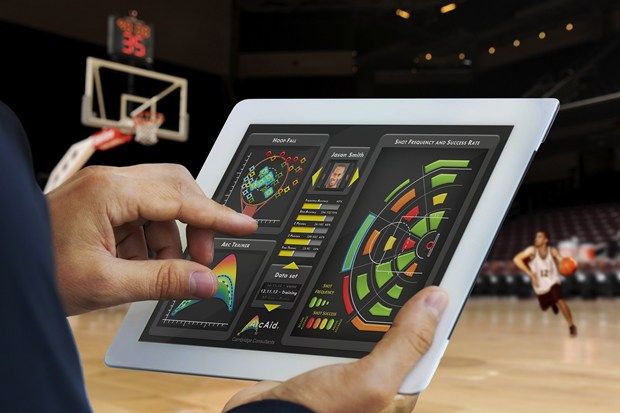
Books and Courses for Youth and Adults
Books like “Basketball Skills & Drills” by Jerry Krause and “Stuff Good Players Should Know” by Dick Devenzio offer timeless guidance. For structured learning, platforms like MasterClass (with Steph Curry) and Udemy host basketball-focused online courses. These resources help players build both practical and mental aspects of the game in a self-paced manner.
Using Technology to Track Progress
Smart basketballs, shot-tracking sensors, and video analysis software (like Hudl or Coach’s Eye) give players deeper insight into their performance. Tracking metrics such as shot accuracy, dribbling speed, and court movement can help set targeted goals and improve training efficiency. Embracing technology makes the learning process data-driven and more engaging.
Conclusion: Take the First Step Toward Basketball Mastery
Mastering basketball begins with understanding and consistently practicing the core skills: dribbling, shooting, passing, rebounding, defense, and footwork. These fundamentals are the pillars of any great player’s game, regardless of age or experience level. Building your basketball IQ, improving communication, and embracing teamwork further elevate your impact on the court.
Whether you’re training at home, on the playground, or as part of a team, focus on doing the basics well. Progress may be gradual, but with dedication and smart practice, you’ll see results. Start today, and you’ll be amazed at how far solid fundamentals can take you in the world of basketball.

